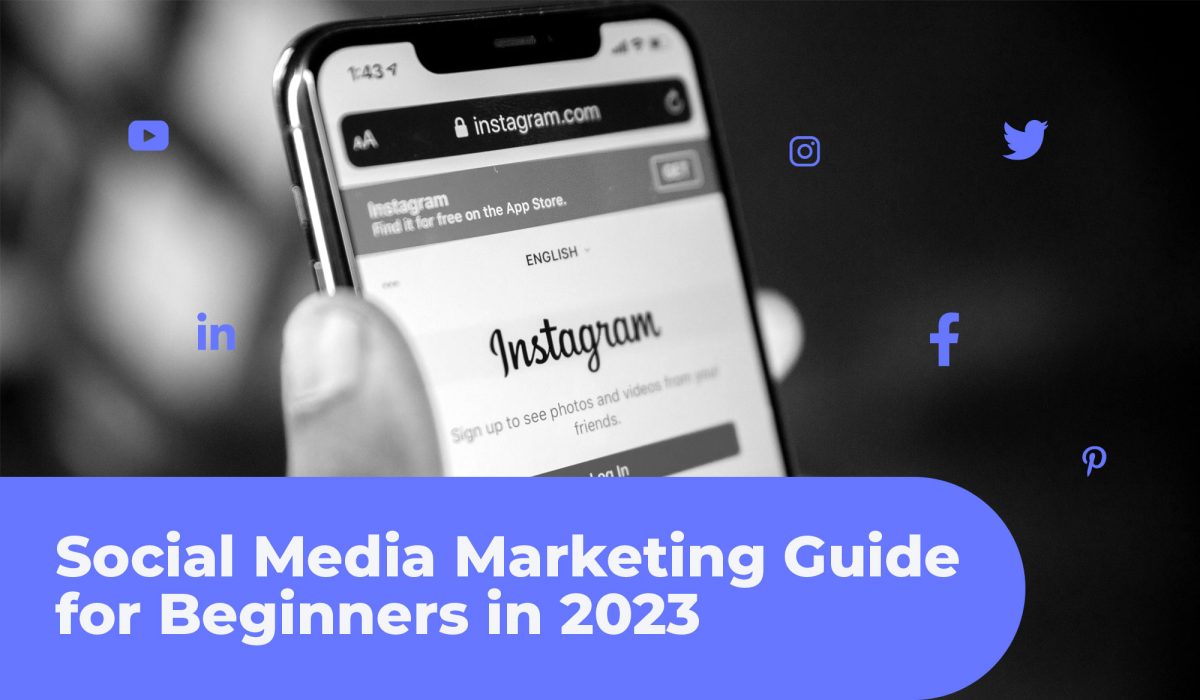If you’re a beginner in the social media sphere, this must be an exciting time for you. You get to step into a new field and create engaging content that will help you raise brand awareness and increase sales.
Having a social media marketing strategy is the best way to go about your social media efforts. You need to know exactly how you’ll find your target audience, create social media posts so that you reach a specific goal and use social media analytics along the way.
Here’s how to do it in 8 easy steps.
Define your target audience
Before you create a social media marketing strategy, you need to determine who you want to reach and what their interests are.
Defining your target audience is important because it allows you to create content and campaigns that are relevant and appealing to the people you want to reach. When you know who your target audience is, you can tailor your messaging, tone, and marketing efforts to their specific needs, interests, and behaviours.
This leads to higher engagement, a stronger connection with your audience, and ultimately, better results for your business. That way your social media marketing campaign has a better chance of providing great results.
Choose the right social media platforms
Based on your audience, select the social media platforms that they use the most.
Choosing the right platforms is important because different social media sites have different user demographics and functions. By selecting platforms where your target audience is active, you can effectively reach and engage with them.
To choose the right platforms, consider the following steps:
- Research your target audience: Look at demographic information, such as age, location, and interests, to determine which platforms they use the most.
- Evaluate each platform: Consider the type of content and interaction each platform is best suited for, such as visual content on Instagram or short videos on TikTok.
- Test and measure: Start with one or two platforms, test your content and engagement, and adjust your strategy based on the results.
By carefully selecting and targeting the right social media platforms, you can optimize your efforts and maximize your return on investment.
The more information you have, the better your social media marketing strategy will be.
Create a content strategy
Plan what type of content you will post, how often, and what the main message will be.
A content strategy is a plan for the creation, publication, and management of content—often for digital media. To build a good content strategy, consider the following steps:
- Identify your goals.
Determine what you hope to achieve with your content, such as increasing brand awareness or driving sales. - Know your audience.
Consider who your target audience is and what type of content they are interested in. - Determine the type of content.
Decide on the formats you will use, such as text, images, videos, or live streams. - Plan the frequency and distribution.
Determine how often you will post and on which platforms. - Create a content calendar.
Organize your content and plan ahead for seasonal or event-related posts. - Measure and adjust.
Use analytics to track the success of your content and make necessary adjustments to your strategy.
Having a well-planned content strategy helps you consistently deliver valuable and relevant content to your audience, build brand awareness, and achieve your business goals.
Establish a brand identity
Consistently use the same logo, colour scheme, and tone of voice across all your social media channels.
Establishing a brand identity is the process of creating a consistent image and perception of your brand in the minds of your audience. To establish a brand identity, consider the following steps:
- Define your brand values and personality. What are the core values that drive your brand, and what tone of voice best represents it?
- Create a visual identity. Design a logo, choose colours and typography that represent your brand, and develop a consistent look and feel for your website and social media.
- Consistency is key. Ensure all your marketing materials, including your website, social media profiles, and ads, reflect your brand identity.
- Develop brand guidelines. Document your brand identity and create a set of guidelines to ensure consistency across all touchpoints.
- Reinforce your identity. Regularly communicate and reinforce your brand values and personality through your content and interactions with customers.
Having a strong brand identity helps you stand out from competitors, build trust with your audience, and establish a consistent image for your brand.
Engage with your followers
Respond to comments and messages, like and share posts from other accounts, and participate in online communities related to your niche.
Make sure you’re prompt in your responses. Don’t leave your audience waiting for a long time.
Use paid advertising
Consider boosting posts or running ads on social media to reach a larger audience.
Paid advertising on social media platforms can be an effective way to reach a larger audience and achieve amazing results. To use paid advertising effectively, consider the following steps:
- Set clear goals. Determine what you want to achieve with your advertising campaign, such as increasing brand awareness or driving sales.
- Target your audience. Use the targeting options available on the platform to reach your desired audience, such as demographics, interests, or behaviours.
- Create compelling ad content. Use high-quality images or videos, clear messaging, and a strong call to action to make your ad appealing and effective.
- Test and optimize. Try different ad formats and targeting options, and use data and analytics to measure results and make adjustments as needed.
- Set a budget. Decide how much you are willing to spend on advertising and allocate your budget accordingly.
- Monitor and adjust. Continuously monitor your advertising performance, track your results, and make changes as needed to achieve your desired outcome.
By following these steps, you can use paid advertising to reach a larger audience, drive more traffic and conversions, and achieve amazing results for your business.
Analyze your results
Use analytics tools to track your progress and make data-driven decisions for future campaigns.
Analyzing your results is important because it allows you to measure the effectiveness of your marketing efforts and make informed decisions to improve them. By analyzing your results, you can:
Evaluate performance
Determine what is working well and what needs improvement in your marketing campaigns.
Make data-driven decisions
Use data and analytics to inform your marketing strategy and make decisions that are based on evidence.
Optimize your efforts
Identify areas where you can improve and make changes to your strategy to maximize your return on investment.
Demonstrate results to stakeholders
Show the impact of your marketing efforts and justify your budget and resources.
Learn and grow
Use insights from your analysis to continuously improve your marketing and adapt to changes in the market.
Analyzing your results is crucial for effective social media marketing, as it helps you make informed decisions, optimize your efforts, and achieve better results over time.
Stay up-to-date
Keep informed of the latest social media trends and changes to the algorithms of each platform to maximize your success.
Staying up to date is important for several reasons:
Stay competitive
Social media platforms and marketing trends are constantly evolving, and staying up to date helps you stay ahead of the curve and maintain a competitive edge.
Keep pace with technology
New technologies are continually emerging that can impact your marketing efforts, and staying up to date helps you take advantage of new opportunities.
Adapt to changes
Social media algorithms and audience behaviour change frequently, and staying up to date helps you adapt to these changes and ensure your marketing efforts remain effective.
Avoid mistakes
Staying up to date on best practices and avoiding outdated tactics helps you avoid mistakes and ensure your marketing efforts are compliant with platform policies.
Improve results
Staying up to date on new techniques and tactics can help you improve your marketing results and achieve better outcomes.
Staying up to date is crucial for success in social media marketing, as it helps you stay competitive, adapt to changes, and continuously improve your efforts.
Conclusion
Creating a social media marketing strategy is a great way to get started with social media in the right way. Our blog can help you out with that.
Make sure that you’re constantly learning, optimizing your social media marketing strategy and talking to other social media managers.


